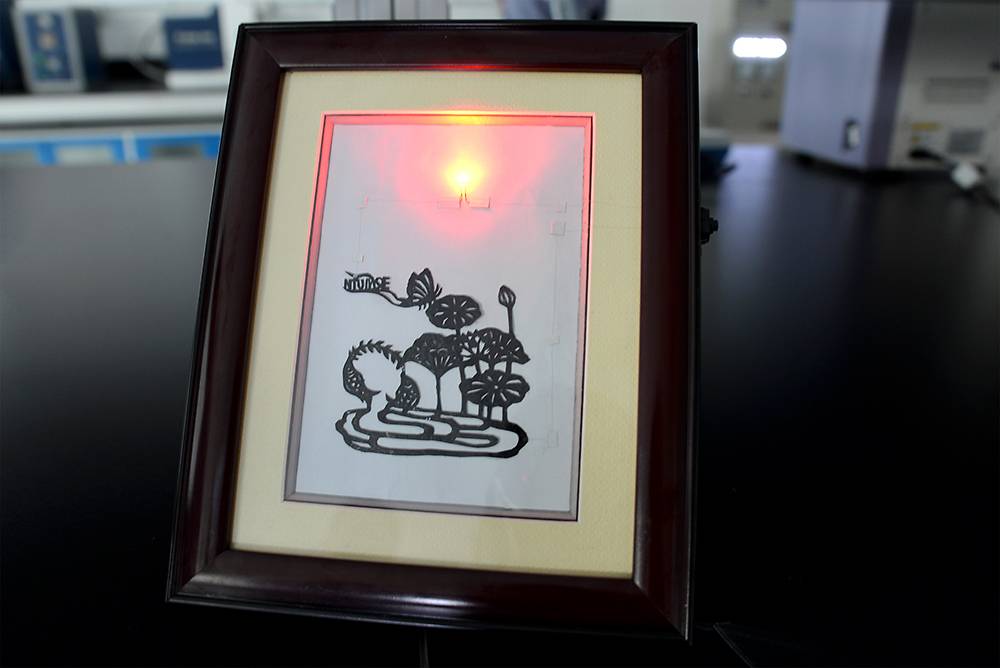SINGAPORE: Scientists at Nanyang Technological University (NTU) have created a customisable, fabric-like power source that can be cut, folded or stretched without losing its function.
In a news release on Tuesday (Jan 30), NTU said the team, led by Professor Chen Xiaodong, Associate Chair (Faculty) at the School of Materials Science & Engineering, reported their findings in the journal Advanced Materials and have filed a patent for the technology.
In addition to creating a wearable power source which works like a fast-charging battery that can be recharged many times, the scientists also made the power source or “supercapacitor” customisable or “editable”.
This means its structure and shape can be changed after it is manufactured, while retaining its function as a power source. While existing stretchable supercapacitors are made into predetermined designs and structures, the new invention can be stretched multi-directionally and is less likely to be mismatched when it is joined up to other electrical components, NTU said.
The new power source developed by NTU scientists can be customised into any shape. (Photo: NTU)
Professor Chen said: “A reliable and editable supercapacitor is important for development of the wearable electronics industry. It also opens up all sorts of possibilities in the realm of the ‘Internet-of-Things’ when wearable electronics can reliably power themselves and connect and communicate with appliances in the home and other environments.
“My own dream is to one day combine our flexible supercapacitors with wearable sensors for health and sports performance diagnostics. With the ability for wearable electronics to power themselves, you could imagine the day when we create a device that could be used to monitor a marathon runner during a race with great sensitivity, detecting signals from both under and over-exertion.”
The new supercapacitor, when edited into a honeycomb-like structure, has the ability to store an electrical charge four times higher than most existing stretchable supercapacitors. Additionally, when stretched to four times its original length, it maintains nearly 98 per cent of the initial ability to store electrical energy, even after 10,000 stretch-and-release cycles, NTU added.

An intricately designed supercapacitor powering a light. Such customisations open up new possibilities for wearable electronics in future. (Photo: NTU)
Experiments conducted by Professor Chen and his team also showed that when the editable supercapacitor was paired with a sensor and placed on the human elbow, it performed better than existing stretchable supercapacitors.
The editable supercapacitor was able to provide a stable stream of signals even when the arm was swinging. These signals are then transmitted wirelessly to external devices, such as one that captures a patient’s heart rate.
The editable supercapacitor is made of strengthened manganese dioxide nanowire composite material. While manganese dioxide is a common material for supercapacitors, the “ultralong nanowire structure”, strengthened by a network of carbon nanotubes and nanocellulose fibres, allows the electrodes to withstand the associated strains during the customisation process, NTU said.
Professor Chen and his team believe that the editable supercapacitor could be easily mass-produced as it would rely on existing manufacturing technologies. NTU said the team estimates that production costs could be as low as S$0.13 to produce a square-centimeter of the material.
(From left) NTU PhD student Lv Zhisheng, Professor Chen Xiaodong and A*STAR senior scientist Dr Loh Xian Jun are part of the team that developed the customisable power source. (Photo: NTU)
The NTU team also collaborated with Dr Loh Xian Jun, Senior Scientist and Head of the Soft Materials Department at the Institute of Materials Research and Engineering (IMRE), Agency for Science, Technology and Research (A*STAR).
Dr Loh said: “Customisable and versatile, these interconnected, fabric-like power sources are able to offer a plug-and-play functionality while maintaining good performance. Being highly stretchable, these flexible power sources are promising next-generation ‘fabric’ energy storage devices that could be integrated into wearable electronics.”




